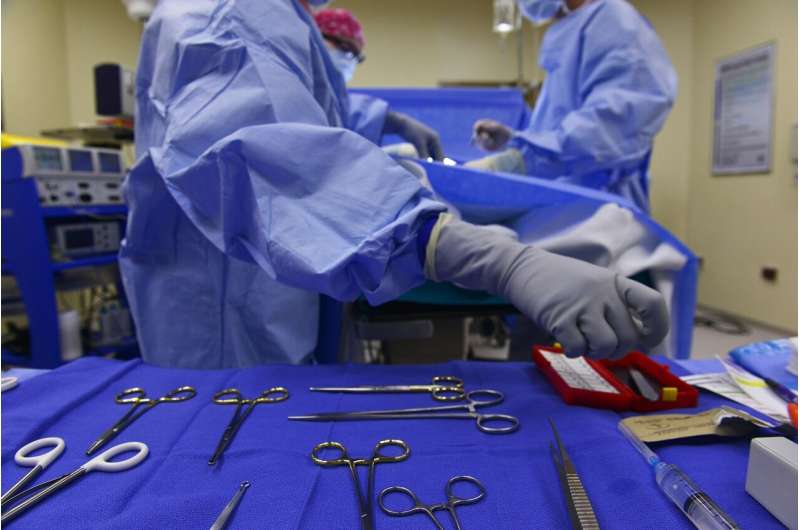Surgical instruments wrongly left inside a patient may not be detected for more than 6 months

When a drain tube, vascular stent or surgical pack is wrongly left in a person's body following surgery or during post-operative care, one in six incidents is not detected for at least six-months.
New research involving a consortium of universities including Macquarie University and University of South Australia has not only identified the length of time before these items known as 'retained surgical instruments' remain undetected but also the main reasons why they occur.
Led by Peter Hibbert, Associate Professor with Macquarie University and a researcher with UniSA's Allied Health and Human Performance unit, the research was based on analysis of 31 investigations into incidents that had occurred in hospitals in Victoria and resulted in patients suffering serious harm.
Incidents of retained surgical instruments occur in all types of surgery, but most often in abdominal operations. They can also occur during post-operative care such as when managing surgical drains.
The research showed that of the incidents of surgical instruments being wrongly left inside a patient, 68 percent were surgical packs, drain tubes or vascular devices. Nearly one quarter of the incidents were detected either immediately in the post-operative period or on the day of the procedure. However, one in six were only detected after 6 months, the longest period being 18 months.
Associate Professor Hibbert says that given the harm and distress associated with this type of incident, it was imperative to identify the number and type of events in the hospital system and the possible ways to avoid future events.
"This new research not only identified the most common means by which retained surgical instruments occurred, but also demonstrated the importance of reviewing multiple events from multiple hospitals in order to determine the most likely contributing factors," Assoc Prof Hibbert says.
"Factors that were most likely to contribute to a surgical instrument being wrongly left inside a patient after surgery include:
- surgeries that go on for longer or are more complex than expected
- staff not counting the number of devices used—such as surgical packs (sponges) – before, as well as after, a procedure
- staff fatigue and poor communication between staff, as well as
- design features of surgical instruments and drains."
Associate Professor Hibbert commended the Victorian Department of Health and Human Services and Safer Care Victoria for their support of this research and urges all hospitals to use the results to better understand these rare but serious and distressing events and how to prevent them.
More information: Peter D Hibbert et al. A qualitative content analysis of retained surgical items: learning from root cause analysis investigations, International Journal for Quality in Health Care (2020). DOI: 10.1093/intqhc/mzaa005
















